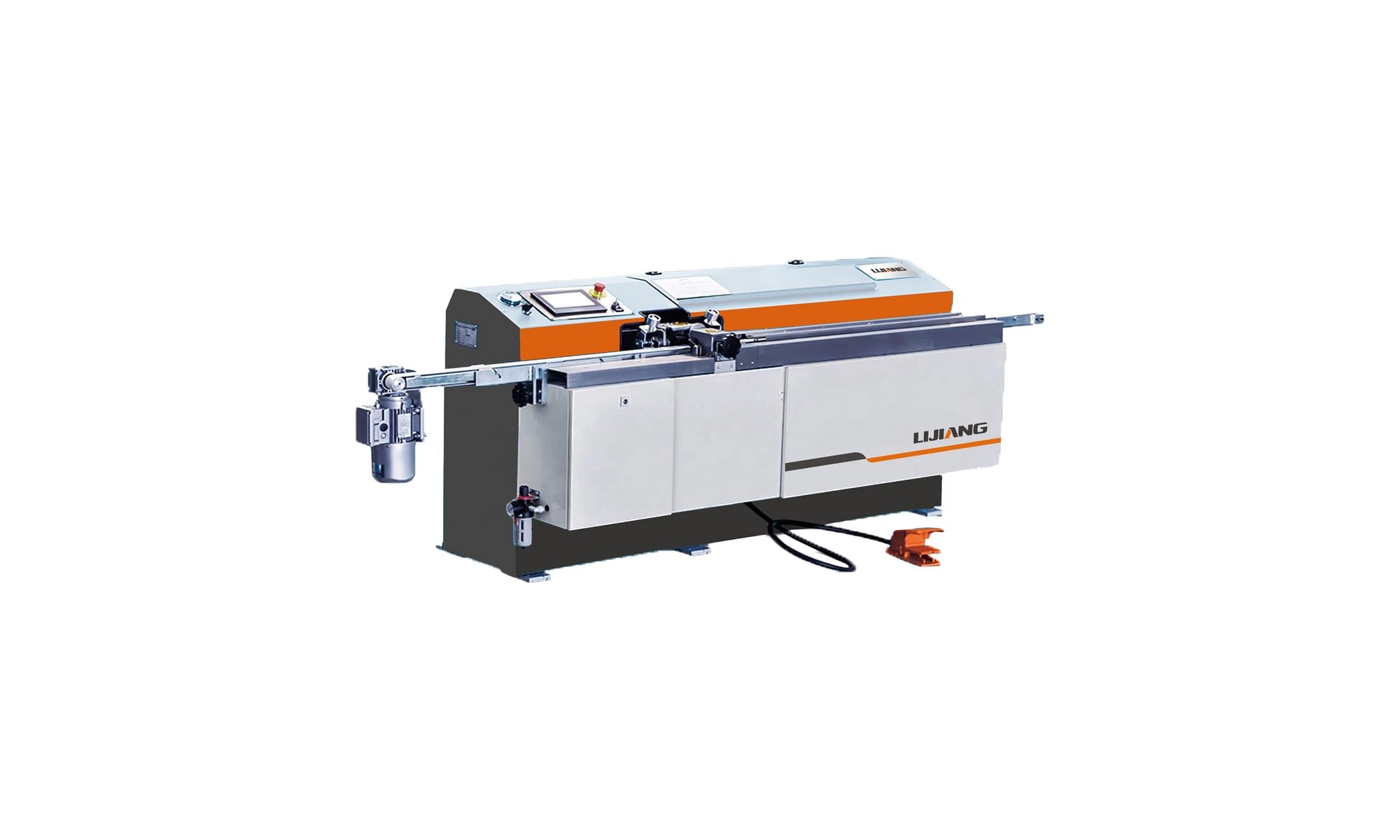Equipo automático de vidrio aislante
Si compra una nueva máquina procesadora de vidrio aislante en el mercado actual, encontrará productos similares en todas partes. Ya seas principiante o experto, es difícil elegir el mejor para tu negocio. Tendrá que comparar características y costos similares, comparar precios para encontrar el mejor precio y saber cómo realizar la transacción. A continuación se presentan cuatro pasos fáciles de seguir que un comprador seguiría para adquirir una nueva máquina de procesamiento de vidrio aislante.
Línea de producción automática de vidrio aislante vertical
Vidrio LIJIANG - Tipo: LJBZ2030 / LJBZ2535

Principio de funcionamiento básico
- Sistema de control PLC Siemens de Alemania, interfaz de pantalla táctil para operación táctil con los dedos
- Identificación automática de vidrio revestido y vidrio Low-E;
- 3 pares de cepillos suaves pueden lavar vidrio de baja emisividad en línea y vidrio de baja emisividad fuera de línea;
- Las piezas de lavado adoptan material SS y dispositivo a prueba de agua;
- Tanque de agua con control automático de temperatura y sistema de lavado de agua.
- Sistema de calefacción de aire;
- Configuración automática de arranque y parada del ventilador de aire;
- Sistema de reducción de ruido;
- Visualización en línea de la velocidad de lavado;
- Trabajo intermitente inteligente, ahorro de energía;
- Tablero de presión ajustable para mantener recta la superficie de presión de la placa;
- Modo de conexión del enchufe de aviación;
- Aplicable para producir IGU triples e IGU con forma.
Pasos de trabajo detallados
- función de prelavado;
- Posicionamiento automáticamente preciso para DGU de 3 o 4 escalones laterales;
- El llenado automático de gas argón podría establecer el valor del gas y mostrar el proceso de llenado en línea con una alta concentración de gas.
Parámetro técnico
| Unit | LJBZ2030 | LJBZ2030G | LJBZ2535 | LJBZ2535G | LJBZ2535DG | |
| Voltage | 380V 50Hz 3P | |||||
| Total Power | Kw | 39.5 | 36 | 41 | 39.5 | 44 |
| Washing Speed | m/min | 2-10 | ||||
| Maximum Working Speed | m/min | 45 | ||||
| Minimum Glass Size | mm | 450*280 | ||||
| Maximum Glass Size | mm | 2000*3000 2000*3500 (Secondary Tableting) | 2500*3500 2500*4000(Secondary Tableting) 2500*4500(Secondary tablet pressing and auxiliary suction cup mechanism) | |||
| Flat Glass Thickness | mm | 3~15(Could be customized 3~30) | ||||
| Washing Brushes | pieces | 6 | ||||
| Maximum Thickness of Insulating Glass | mm | 60 | ||||
| Total Gas Consumption | L/min | 1200 | ||||
| Conveyer roll Height | mm | 520 | ||||
| Dimension L*W*H | mm | 20200*3500*3200 | 23800*3500*3700 | 27200*3500*3700 | ||
Descripción técnica

Línea de producción automática de vidrio flotante con aislamiento vertical
Vidrio LIJIANG - LJBZ2030GF/LJBZ2535GF
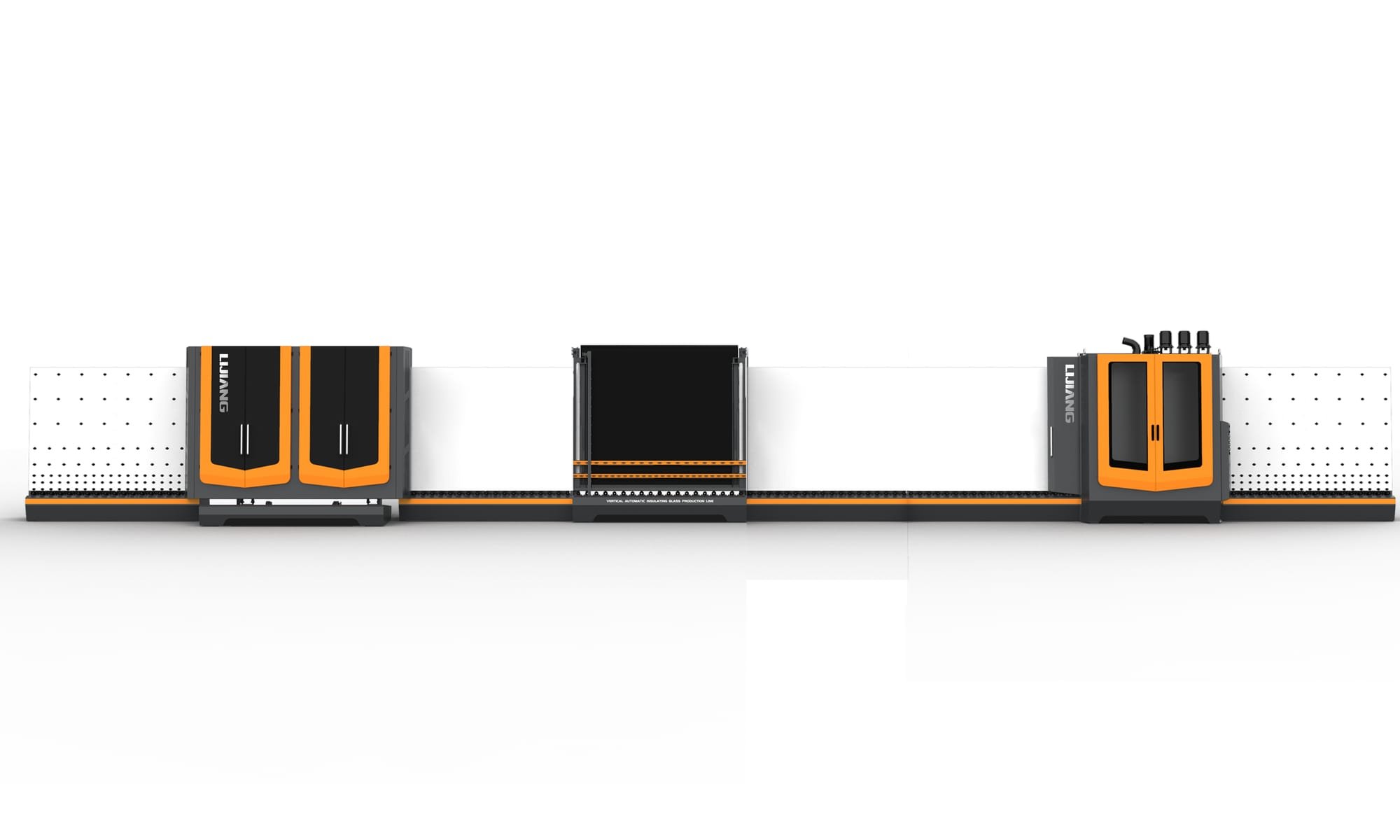
Principio de funcionamiento básico
- Air-floating back plate, to avoid the wheel scraching the glass and leaving wheel marks;
- Two pieces of IGUs or DGUs could be pressed and filled gas in once time, high work efficiency;
- Argon-gas filling in pressing, automatic filling the glass in different areas according to the size of glass;
- Germany Siemens PLC control system, touch screen interface for finger touch operating;
- Automatic identification of coated glass and Low-E glass;
- 3 pairs of soft brushes could wash online Low-E glass and offline Low-E glass;
- The washing parts adopt SS material and waterproof device;
- Water tank with automatic temperature control and water washing system;
- Air heating system;
- Air Fan automatic start and stop setting;
- Noise reduction system;
- Online display of washing speed;
- Intelligent intermittent work, saving-energy;
- Adjustable external rotary positioning system of DGUs or IGUs;
- Connection mode of aviation plug;
- ERP system is optional.
Pasos de trabajo detallados
Además de las características técnicas de la línea de producción ordinaria y de la línea de producción inflable, la línea de producción de vidrio aislante completamente automática serie LJBZ2030GF/LJBZ2535GF agrega una función de flotación de aire en la sección de transmisión entre la sección de lavado y la sección de prensa de placas, lo que hace que el vidrio superficie sin costuras durante el proceso de inspección. Sin contacto humano ni piezas del equipo que oscurezcan. Las especificaciones estándar son 2000 mm*2800 mm y 1500 mm*2200 mm.
Parámetro técnico
| Unit | LJBZ2030GF | LJBZ2535GF | LJBZ2535DGF | |
| Voltage | 380V 50Hz 3P | |||
| Total Power | Kw | 41 | 44.5 | 58 |
| Washing Speed | m/min | 2~10 | ||
| Maximum Working Spped | m/min | 45 | ||
| Minimum Glass Size | mm | 450*280 | ||
| Maximum Glass Size | mm | 2000*3000 2000*3500(Secondary tableting) | 2500*3500 2500*4000(Secondary tableting) 2500*5000 (Secondary tablet pressing and auxiliary suction cup mechanism) | |
| Flat Glass Thickness | mm | 3·15(can be customized 3~30) | ||
| Washing Brushes | pieces | 6 | ||
| Maximum Thickness of insulated glass | mm | 60 | ||
| Total Gas Consumption | L/min | 1200 | ||
| Conveyer Roll Height | mm | 520 | ||
| Dimension L*W*H | mm | 20200*3500*3200 | 23800*3500*3700 | 27200*3500*3700 |
Descripción técnica

Línea de producción automática de vidrio aislante de llenado de gas argón de prensado de placa doble de tamaño gigante
Vidrio LIJIANG - Tipo: LJBZ3370
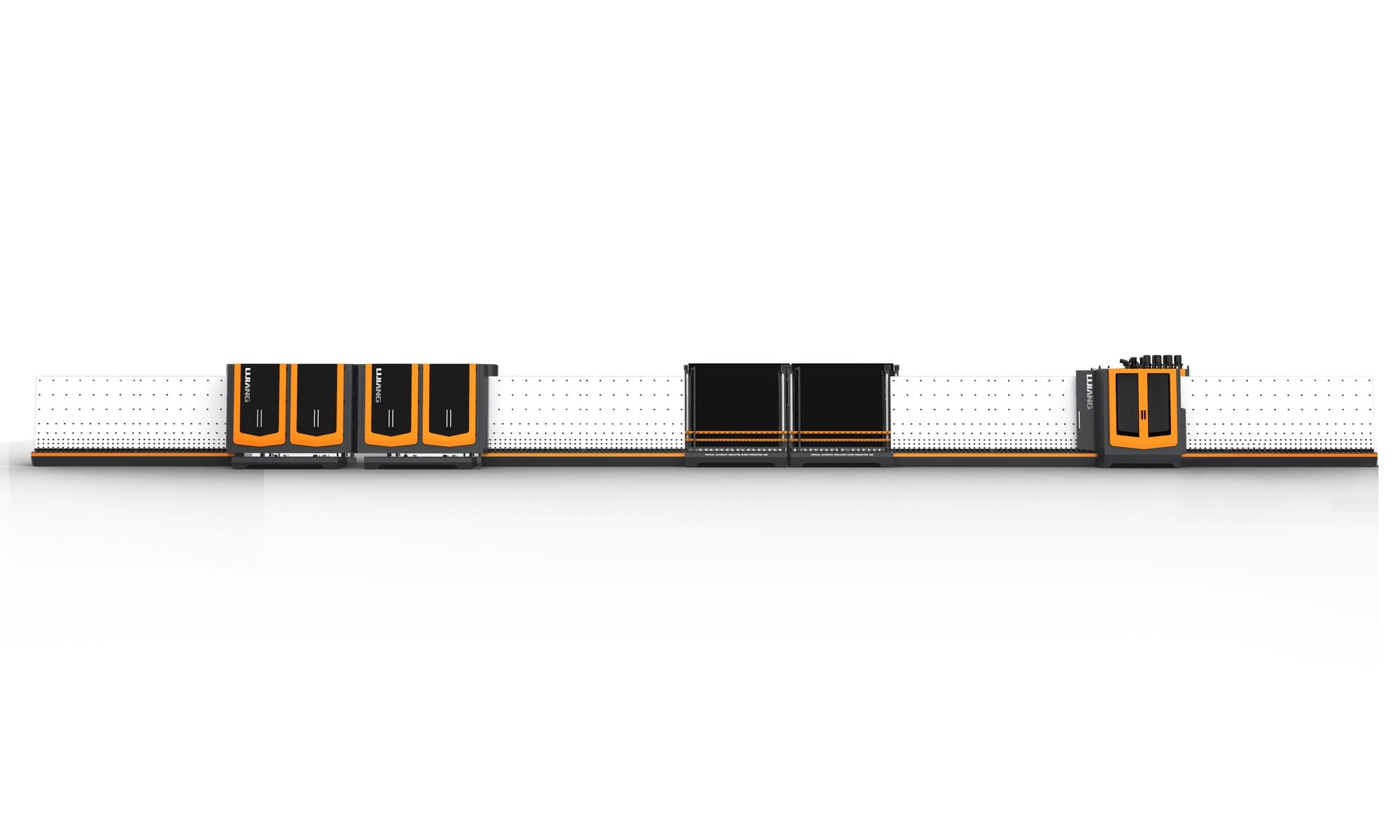
Principio de funcionamiento básico
Regular Function
Optional Function
- Germany SIemens PLC control system, touch screen interface to finger touch operating;
- Automatic identification of coated glass and Low-E glass;
- 3 pairs of soft brushes could wash online Low-E glass and offline Low-E glass;
- Water tank with automatic temperature control and water washing system;
- Air heating system;
- Air Fan automatic start and stop setting;
- Noise reduction system;
- Online display of washing speed;
- Intelligent intermittent work, saving-energy;
- Adjustable pressing board to keep the plate pressing surface straight;
- Connection mode of aviation plug
- Applicable to produce triple IGUs and shaped IGUs.
Optional Function
- Pre-washing Function;
- Automatically accurate positioning for 3 side step DGUs or 4 side step IGUs;
- Automatic argon-gas filling could set gas value and display the process of filing online with high gas concentration.
Pasos de trabajo detallados
The comparison of two design structures of large-panel insulated glass production lines
For example, the maximum size of insulating glass required for a construction project is 3m*6m.
① The equipment structure:
Extended size equipment + Inside combination technology + Two plate-pressing sections + Online argon-gas filling function
Each section of the production line needs to be designed and extended to the maximum size of the large-panel insulating glass, and the equipment size of all processing sections except the vertical glass washing and drying machine is upgraded to more than 6m. At the same time, the plate pressing section is made into two sections, and the processing method of combining the plates inside the plate is adapted to meet the requirement that the maximum length reaches 6m.
Advantage:
1. It can realize the one-time plate press molding of large plate insulating glass, and complete the argon filling function at one time, without the need for multiple processing operations;
2. It can realize simultaneous pressing and inflating of two pieces of insulating glass to improve production efficiency.
Disadvantages:
1. The production line occupies a large workshop area;
2. The price is relatively high.
Know More
②The equipment structure:
Normal size equipment + Outside combination technology + Only one plate-pressing sections + Offline argon-gas filling function
It using the method of outside combination sheet + single plate press, it is necessary to combine two pieces of 3m*6m glass together outside the plate press, and the glass enters the plate press two or more times Pressing for the second time, and then manually inflating to complete the processing of insulating glass.
Advantage:
1. The equipment of the second structure is about 4 meters shorter than the double-plate press of the first structure, and the floor space is smaller.
2. The price is relatively lower than LIJIANG Glass LJBZ3370 Automatic Jumbo Size Insulating Glass Production Line.
Disadvantages:
1. The length of the plate press is not enough, it needs to be pressed twice or more times, which will cause uneven pressing of the first sealant butyl rubber coating and affect the sealing effect of the glass.
2. There is no way to fill the glass with argon gas online. The only way is to move the glass offline to punch holes and then manually inflate the gas. Manual inflation takes a long time, and it is difficult to meet the standard requirements of a gas content.
3. During the processing of large glass plates, multiple pressings are required, and the production efficiency will also be reduced.
For example, the maximum size of insulating glass required for a construction project is 3m*6m.
① The equipment structure:
Extended size equipment + Inside combination technology + Two plate-pressing sections + Online argon-gas filling function
Each section of the production line needs to be designed and extended to the maximum size of the large-panel insulating glass, and the equipment size of all processing sections except the vertical glass washing and drying machine is upgraded to more than 6m. At the same time, the plate pressing section is made into two sections, and the processing method of combining the plates inside the plate is adapted to meet the requirement that the maximum length reaches 6m.
Advantage:
1. It can realize the one-time plate press molding of large plate insulating glass, and complete the argon filling function at one time, without the need for multiple processing operations;
2. It can realize simultaneous pressing and inflating of two pieces of insulating glass to improve production efficiency.
Disadvantages:
1. The production line occupies a large workshop area;
2. The price is relatively high.
Know More
②The equipment structure:
Normal size equipment + Outside combination technology + Only one plate-pressing sections + Offline argon-gas filling function
It using the method of outside combination sheet + single plate press, it is necessary to combine two pieces of 3m*6m glass together outside the plate press, and the glass enters the plate press two or more times Pressing for the second time, and then manually inflating to complete the processing of insulating glass.
Advantage:
1. The equipment of the second structure is about 4 meters shorter than the double-plate press of the first structure, and the floor space is smaller.
2. The price is relatively lower than LIJIANG Glass LJBZ3370 Automatic Jumbo Size Insulating Glass Production Line.
Disadvantages:
1. The length of the plate press is not enough, it needs to be pressed twice or more times, which will cause uneven pressing of the first sealant butyl rubber coating and affect the sealing effect of the glass.
2. There is no way to fill the glass with argon gas online. The only way is to move the glass offline to punch holes and then manually inflate the gas. Manual inflation takes a long time, and it is difficult to meet the standard requirements of a gas content.
3. During the processing of large glass plates, multiple pressings are required, and the production efficiency will also be reduced.
Parámetro técnico
| Unit | LJBZ3370 | |
| Voltage | 380V 50Hz 3P | |
| Total Power | Kw | 54.5 |
| Washing Speed | m/min | 2~10 |
| Maximum Working Speed | m/min | 45 |
| Minimum Glass Size | mm | 450*280 |
| Maximum Glass Size | mm | 3300*7000(Single-Press Mode) 3000*3000(Double-Press Mode) |
| Flat Glass Thickness | mm | 3~30 |
| Washing Brushes | pieces | 6 |
| Maximum Thickness of Insulated Glass | mm | 80 |
| Total Gas Consumption | L/min | 1500 |
| Conveyer Roll Height | mm | 520 |
| Dimensions(L*W*H) | mm | 47200*3500*4500 |
Descripción técnica

Máquina automática de eliminación de vidrio vertical de baja emisividad
Vidrio LIJIANG - Tipo: LJCM2545
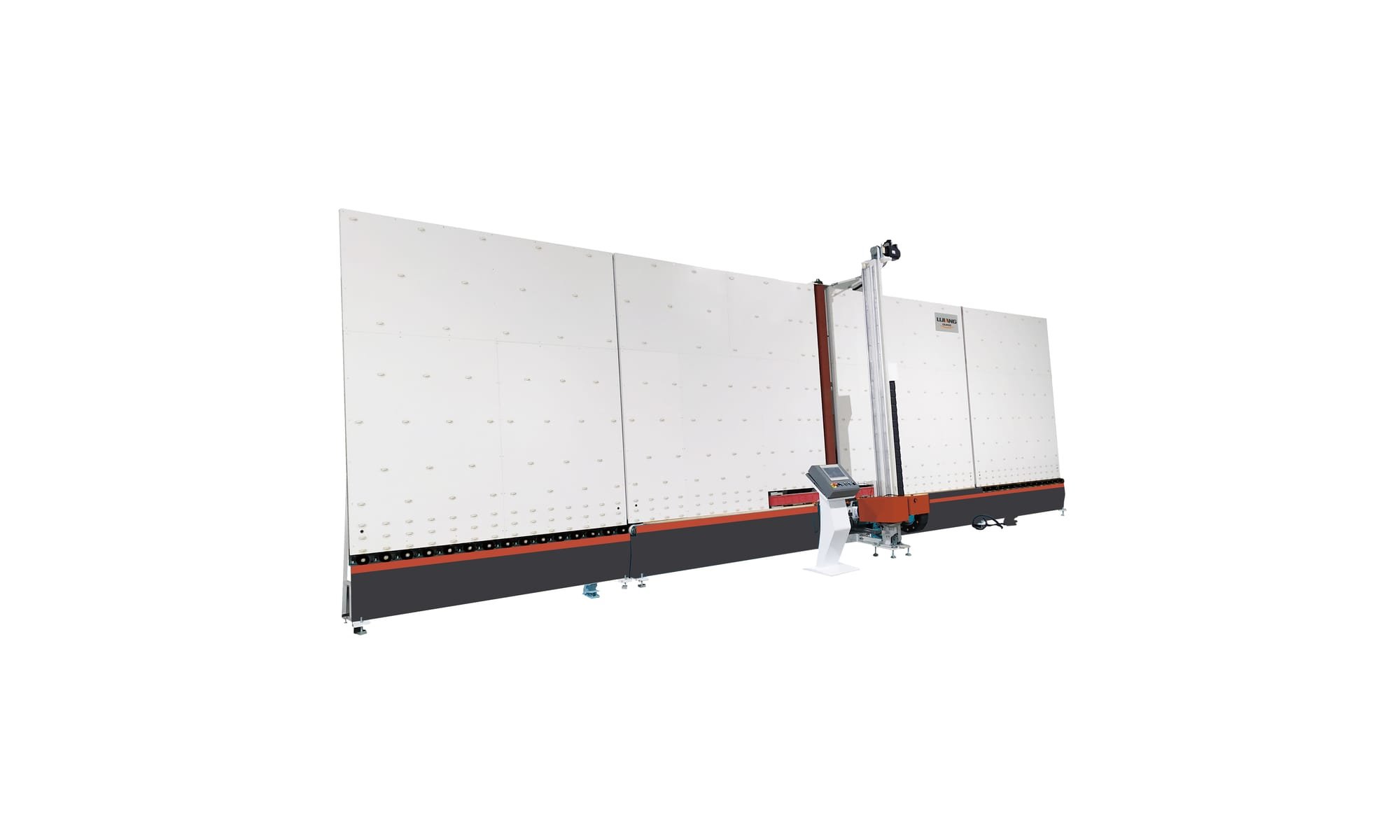
Principio de funcionamiento básico
- Seis juegos de servomotores, sistema TRIO británico;
- Entrada-salida con dos dicciones, 4 direcciones disponibles;
- Mide automáticamente el tamaño del vidrio;
- Distingue automáticamente el revestimiento de vidrio de baja emisividad;
- El ancho de la eliminación del borde del vidrio Low-E es ajustable;
- Adopta el sistema de control PLC, interfaz de pantalla táctil para operación táctil con los dedos;
- Sistema de control inteligente, podría reconocer el procesamiento por lotes.
Pasos de trabajo detallados
- Eliminación de vidrio de baja emisividad;
- Reconocimiento automático de película de vidrio de baja emisividad.
Parámetro técnico
| Item. | Spec. |
| Voltage | 380V 50Hz 3P |
| Max. Glass Processing Size | 2500 mm*4500 mm |
| Min. Glass Processing Size | 300 mm*400 mm |
| Glass Thickness | 3-15 mm |
| Low-E Edge Deleting Width | 10-500 mm |
| Glass Conveying Speed | 0-30 m/min |
| Low-E Glass Edge Deleting Speed | 2-29 m/min |
| Grinding Wheel Width | 10/12/15 mm |
| Total Power | 15 Kw |
| Dimension(L*W*H) | 9700*2500*3400 mm |
| Weight | 2600 Kg |
Descripción técnica
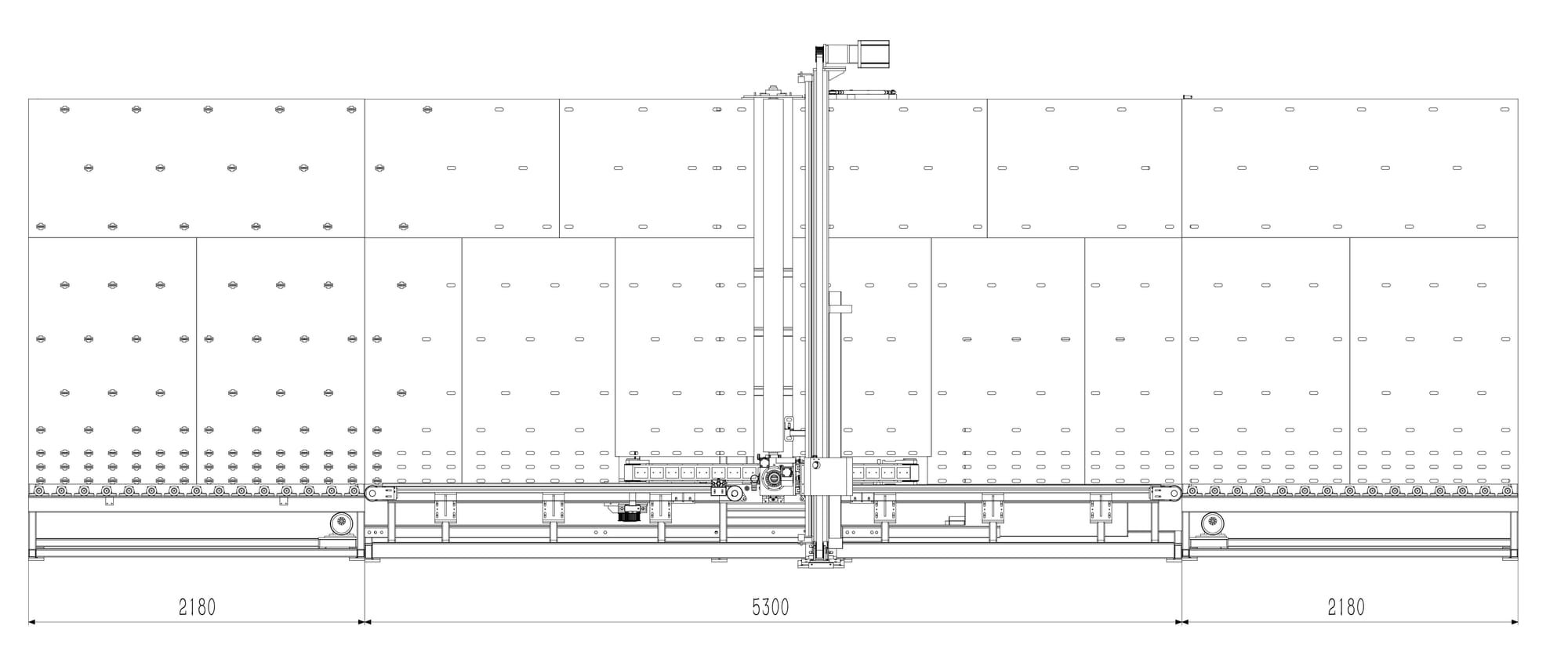
Principio de funcionamiento básico
- Adopta el sistema de control servo Yaskawa de Japón, completamente automático y de alta eficiencia;
- Función de memoria automática, sin necesidad de ingresar parámetros repetidamente;
- Reparación automática de esquinas de vidrio con raspador y rodillo;
- La sección de transporte del equipo se puede dividir en cuatro secciones y el vidrio se puede almacenar previamente;
- Mida automáticamente el tamaño del vidrio y la profundidad del vidrio, ajuste la velocidad de sellado;
- Adopte la correa de distribución, la transferencia suave y la posición precisa;
- Cada función automática es con operación manual;
- Podría recubrir el doble acristalamiento, vidrio moldeado, vidrio escalonado, triple vidrio.
- Un juego de bomba de refuerzo controla dos grupos de selladores;
- Función de descarga de sellador de sincronización automática;
- El sistema de mezcla de sellador adopta una estructura antibloqueo y es fácil de limpiar.
Pasos de trabajo detallados
Equipment preparation: a. Make sure the power connection of the sealing line is normal, and confirm that the required air source and glue supply system are working properly. b. Check whether all components and sensors of the sealing line are intact, and perform necessary maintenance and cleaning.
Set parameters: a. On the control interface of the sealing line, set relevant parameters, such as glass plate size, sealing speed, sealing width, sealing thickness, etc. Set parameters according to product requirements and process specifications. b. If using two-component glue, you need to set the glue ratio and mixing time.
Start the sealing robot equipment: a. Press the start button to start the sealing robot equipment. Ensure the safety of the insulating glass production line and wait for the sealing robot equipment to enter normal working conditions.
Automatic conveying of glass plates: a. Place the glass plate to be sealed on the conveyor belt or transmission mechanism to ensure that the position and positioning of the glass plate are accurate.
Automatic sealant sealing application: a. The sealing line will automatically apply sealant evenly to the edge of the glass plate or the parts that need to be sealed according to the set parameters. Ensure that the sealing robot equipment works stably and the glue is sprayed evenly.
Glass plate fixing: a. After the sealant is sprayed, the sealing line will fix another glass plate to be sealed on the glass plate that has been coated with sealant. Make sure the glass panels are aligned accurately and sealed tightly.
Sealant sealing and compression: a. The insulating glass sealing robot machine will perform a certain pressure treatment on the two glass plates to ensure a tight combination of the sealant and the glass plates. Set appropriate pressure and duration based on product requirements and equipment capabilities.
Set parameters: a. On the control interface of the sealing line, set relevant parameters, such as glass plate size, sealing speed, sealing width, sealing thickness, etc. Set parameters according to product requirements and process specifications. b. If using two-component glue, you need to set the glue ratio and mixing time.
Start the sealing robot equipment: a. Press the start button to start the sealing robot equipment. Ensure the safety of the insulating glass production line and wait for the sealing robot equipment to enter normal working conditions.
Automatic conveying of glass plates: a. Place the glass plate to be sealed on the conveyor belt or transmission mechanism to ensure that the position and positioning of the glass plate are accurate.
Automatic sealant sealing application: a. The sealing line will automatically apply sealant evenly to the edge of the glass plate or the parts that need to be sealed according to the set parameters. Ensure that the sealing robot equipment works stably and the glue is sprayed evenly.
Glass plate fixing: a. After the sealant is sprayed, the sealing line will fix another glass plate to be sealed on the glass plate that has been coated with sealant. Make sure the glass panels are aligned accurately and sealed tightly.
Sealant sealing and compression: a. The insulating glass sealing robot machine will perform a certain pressure treatment on the two glass plates to ensure a tight combination of the sealant and the glass plates. Set appropriate pressure and duration based on product requirements and equipment capabilities.
Parámetro técnico
| Item. | Spec. |
| Max. Glass Size | 2000*3000 mm/2500*4000 mm/3300*7000 mm |
| Min. Glass Size | 400*300 mm |
| Glass Thickness | 12-56 mm/12-56 mm/12-80 mm |
| Working Speed | 5-40 mm |
| Air Pressure | 0.6-0.8 MPa |
| Squeeze Pressure | <35 MPa |
| Voltage | 380V 50Hz 3P |
| Power | 15 Kw/15 Kw/20 Kw |
| Overall Dimension(L*W*H) | 3700*2500*3000 mm/8700*2500*3500 mm/ 15000*2500*4300 mm |
| Weight | 4300 kg/5000 kg/7000 kg |
Descripción técnica
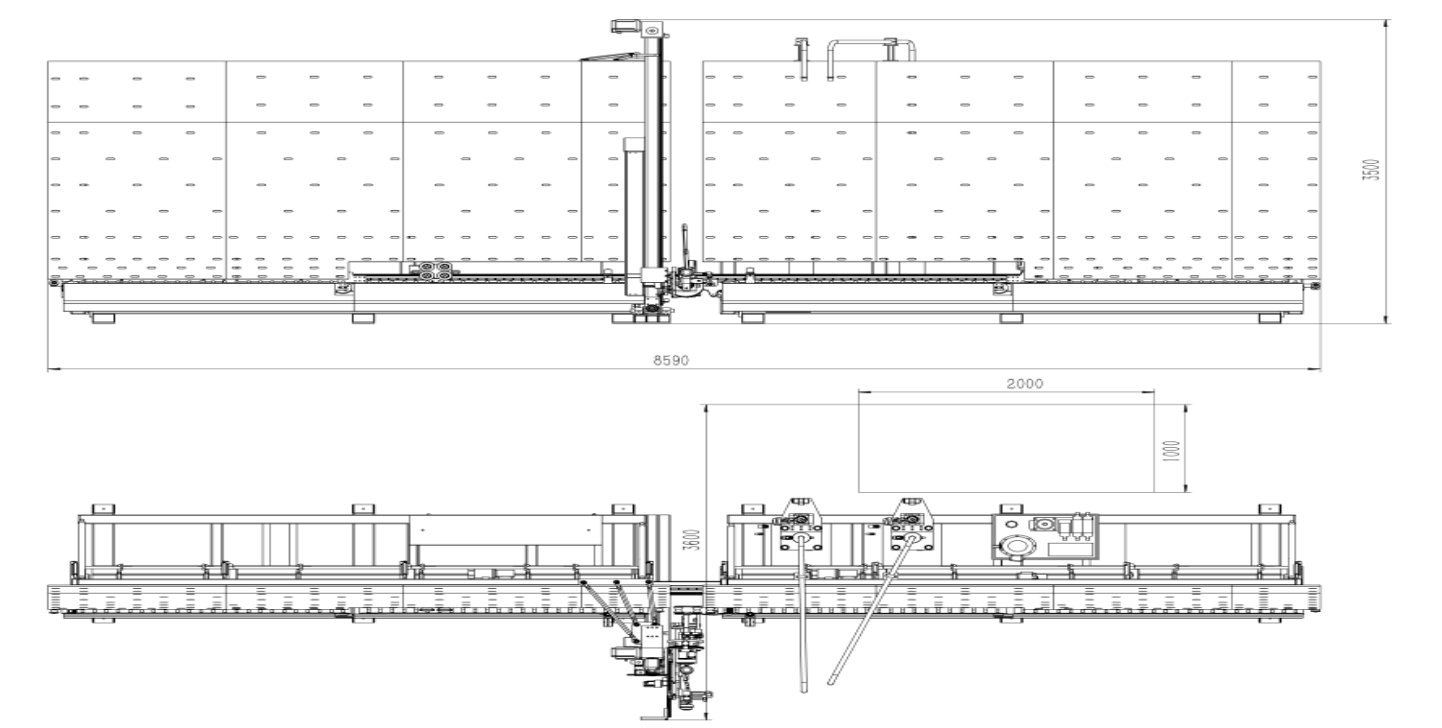 Equipo de robot de sellado de vidrio aislado automático LJTJ2030/LJTJ2540 2
Equipo de robot de sellado de vidrio aislado automático LJTJ2030/LJTJ2540 2 Dobladora automática de espaciadores de aluminio y vidrio aislado
Vidrio LIJIANG - Tipo: LJZW2020 / LJZW2020N
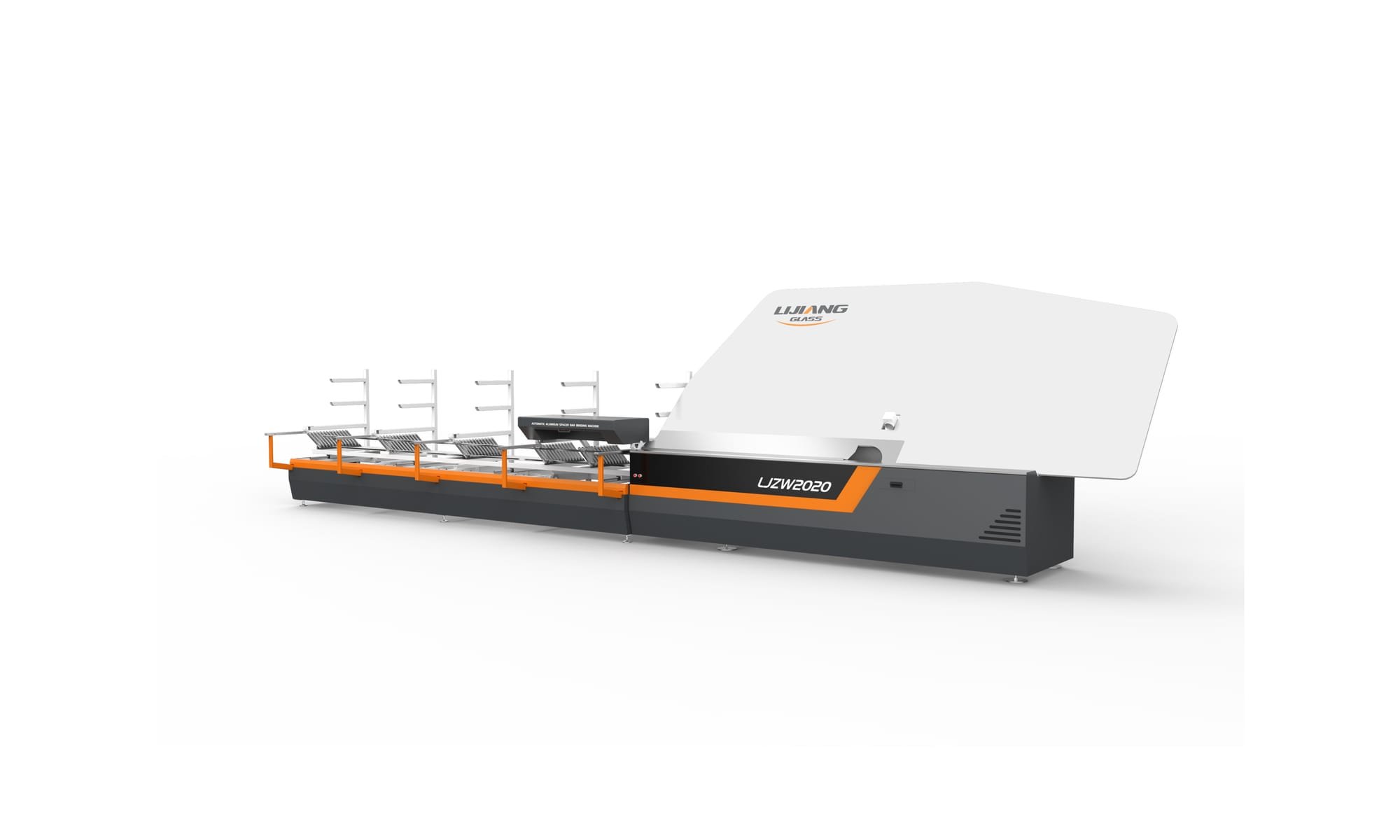
Principio de funcionamiento básico
General Performance
Optional Performance
- Adopts the servo control feeding system, the size of aluminum spacers could be adjusted with an accuracy of 0.1 mm/m;
- CNC Bending angle control system with adjustable accuracy of 0.1°;
- Sets up four groups of aluminum spacers and stainless steel spacers storage units;
- Aluminum spacer bars with multiple sizes could be selected at will;
- Automatically adjust the bending speed according to the size of the aluminum spacer or stainless steel spacer to avoid the deformation of the large spacer and ensure the high speed and continuity of the small frame;
- Automatic continuous connection of spacer, cutting spacer, avoidance of spacer joint;
- No material prompt, sleep prompt, fault prompt, work prompt, unreasonable data refuse processing and prompt support arc-shaped aluminum spacer and special shaped aluminum spacer bending;
- USB function, which could read EXCEL directly;
Optional Performance
- Could connect with ERP system;
- Could optional the function of automatic printing code, automatic printing label, bending the stainless steel spacer, bending the warm edge spacer, bending the stainless steel composite warm edge strips, bending the glass fiber warm edge strips, and bending the pure opaque steel strips.
Pasos de trabajo detallados
Pasos operativos
- Encienda la alimentación, encienda el interruptor de funcionamiento en la consola de control y presione la bomba de aceite para arrancar.
- Ajusta el trazo. Preste atención a ajustar la carrera antes de su uso; y se debe establecer un espacio cuando la máquina dobladora sube y baja hasta el fondo. El ajuste sin espacio provocará cierto desgaste en el equipo de la máquina dobladora.
- Selección de la muesca de la dobladora. La base de selección es: el espesor de la placa de vidrio es aproximadamente 8 veces el ancho. Por ejemplo, si el espesor de la placa de vidrio es de 5 cm, entonces la muesca debe ser de 40 cm.
- Ajuste manual o eléctricamente el tope detrás de la máquina dobladora.
- Presione el interruptor del pedal para realizar la flexión.
- Durante el procesamiento, se debe observar en todo momento el estado y el efecto del procesamiento del vidrio para evitar fallas en el equipo o productos defectuosos.
- Cuando la máquina dobladora deje de funcionar, apague el interruptor de funcionamiento de la mesa de operaciones, luego apague la alimentación y limpie la superficie de trabajo de la máquina dobladora para que quede limpia y ordenada para el próximo uso.
Parámetro técnico
| Item. | Spec. |
| Max. Bending Size | 1800*2000 mm (in once)/ 2500*4000 mm(in twice) |
| Min. Bending Size | 150*300 mm |
| Aluminum Spacer Width | 5.5-26.5 mm |
| Spacers Racks | 4 |
| Spacer Size Error | ±0.5 mm |
| Angle Error | ±1° |
| Conveying Speed | 1250 mm/s |
| Air Pressure | ≥0.65 MPa |
| Voltage | 380 50Hz 3P |
| Total Power | 2.5 Kw |
| Dimension(L*W*H) | 10500 mm*2200 mm*2600 mm |
| Weight | 1580 kg |
Descripción técnica
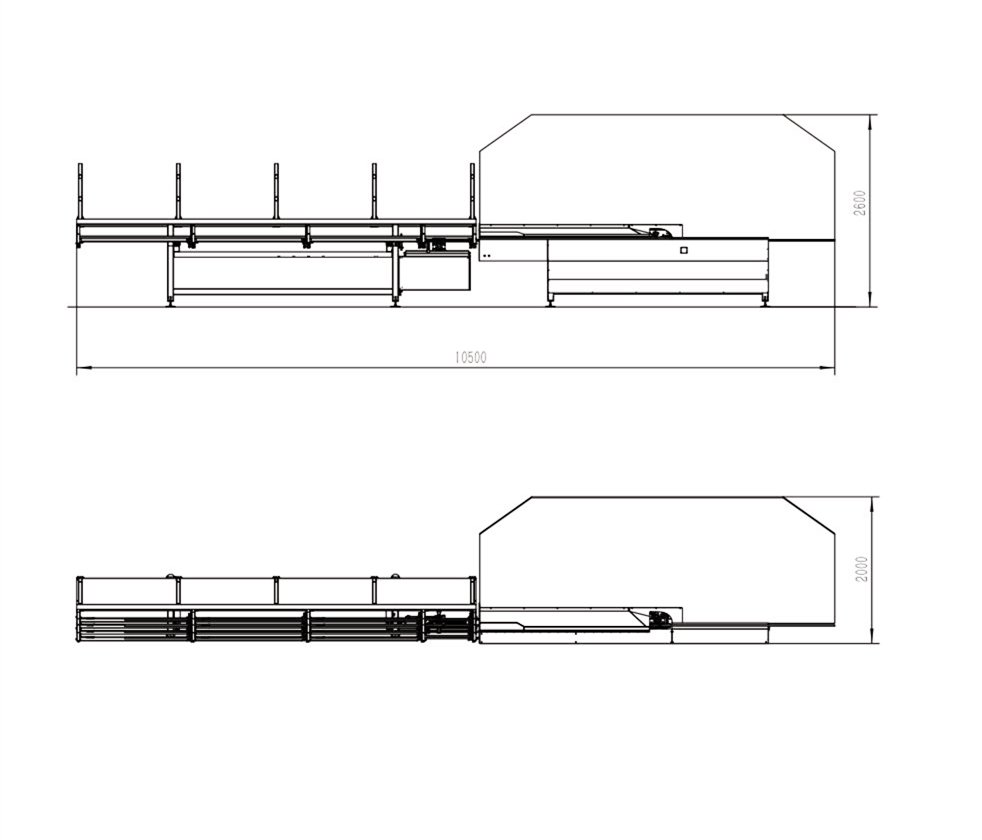 Máquina dobladora de espaciadores de aluminio para vidrio aislante LJZW2020
Máquina dobladora de espaciadores de aluminio para vidrio aislante LJZW2020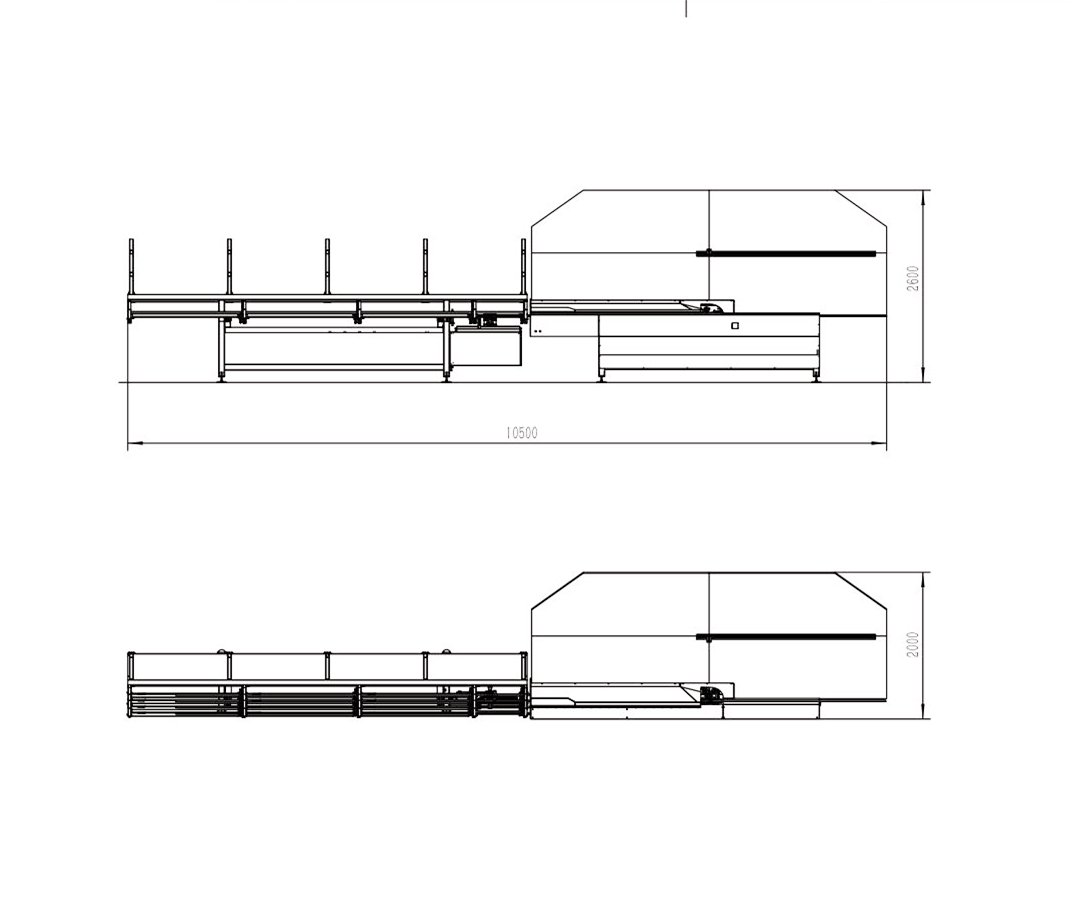 Máquina dobladora de espaciadores de aluminio para vidrio aislante LJZW2020A
Máquina dobladora de espaciadores de aluminio para vidrio aislante LJZW2020A Principio de funcionamiento básico
- La velocidad de extrusión de butilo podría alcanzar los 47 m/min;
- Ahorrando butilo en comparación con la máquina ordinaria, el pegamento podría alcanzar los 7 g/m;
- Escape manual, operación simple;
- Adopte una correa síncrona no adhesiva, no se requiere polvo de talco para limpiarla;
- Los accesorios principales están hechos de marca alemana, control de programa PLC, rendimiento estable;
- Uso de liberación de butilo vertical móvil y extrusión horizontal, conveniente y práctico;
- Ajuste el ancho del cabezal de pegamento automáticamente, asegúrese de que el pegado de doble cara sea consistente con el control integrado de valor de apertura rápida;
- El ajuste de altura del haz es conveniente, efectivo para resolver el problema de la línea de escritura;
- Utilice la operación de pantalla táctil, prueba simple;
- Ajuste la salida de butilo automáticamente según el cambio de velocidad;
- Adopte un sistema hidráulico de marca para garantizar una salida de caucho uniforme y completa;
- El cilindro buytl adopta la estructura pull-up, que es conveniente para cambiar el revestimiento de la extrusora de butilo.
Pasos de trabajo detallados
Operation Steps
The following steps should be followed before and after each operation:
1. Start the conveyor belt
Adjust the conveyor belt to the appropriate speed, with an adjustable range of 8-30m/min.
2. Adjust the position of the rubber extrusion head
According to the width requirements of the spacer, adjust the distance between the two extrusion heads, the range is 6-16mm. When adjusting, the spacer (frame) should be centered with the small pressure wheel and the butyl extrusion nozzle, and the positions of the conveyor belt frame, butyl extrusion seat, and butyl extrusion head should be adjusted according to the height of the adhesive tape.
3. Butyl extruder temperature adjustment before work
Generally, the heating control switch is turned on about 1-2 hours before work, and the glue head temperature is set to 120-140℃ and the glue tank temperature is 110-120℃. Since the heating temperatures and process parameters specified for butyl rubber produced by various manufacturers are different, the above heating temperatures and times are for reference only.
4. Adjustment of opening and closing of the butyl extruder valve
After the heating system reaches the set temperature, do not open the hydraulic station first, but proceed as follows:
Process time setting:
According to the screen prompts, switch to the screen that needs to be adjusted, press the SET key, and the adjustable value will flash. The "←, →" keys change the position of the value; press the "↑" key to increase the value; press the "↓" key to decrease the value. After setting, press the ENT key and the data will be automatically stored, otherwise, the data will remain at the original value.
A. Adjust the time of the right pressing wheel: Make the front end of the spacer frame (strip) on the conveyor belt and the center of the extrusion head, so that the right pressing wheel presses on the aluminum spacer frame (strip). Before the end of the spacer frame (strip) passes through the right pressure wheel, the right pressure wheel can be lifted smoothly, which is very important for the bent spacer frame.
B. Adjust the time of the left pressing wheel: make the front end of the spacer frame (strip) on the conveyor belt, and make the left pressing wheel press on the aluminum spacer frame (strip). Before the end of the spacer frame (strip) passes through the left pressure wheel, the left pressure wheel can be lifted smoothly, which is very important for the bent spacer frame.
C. Adjust the butyl extruder spraying time: When the front end of the spacer frame (strip) is on the conveyor belt and is in the center of the butyl extrusion head, the butyl valve cylinder moves and the buytl valve opens; when the end of the spacer frame (frame) passes the butyl nozzle, close the butyl valve, no excess butyl leaks out.
5. Turn on the hydraulic station:
Before opening the hydraulic station, check the relative positional alignment of the butyl extrusion piston and the center of the butyl cylinder to ensure that the butyl extrusion piston can be correctly pressed into the butyl cylinder. Otherwise, damage to the butyl cylinder and the oil cylinder will occur. When the pumping station starts, the cylinder lift switch should be adjusted to the middle position (zero position). At this time, the pressure regulating valve should be in the open state. After the pumping station starts, gradually adjust the pressure regulating valve to increase the system pressure to the working pressure, but The working pressure shall not exceed 18MPa. When the room temperature is too high in summer and the hydraulic station works for a long time, the temperature will rise too high and the hydraulic oil will become thinner and lose working pressure. At this time, the hydraulic station should be suspended and restarted after the oil temperature drops.
6. Butyl extruder injection
A. Adjust the cylinder lift switch to the middle position and start the hydraulic station. When the hydraulic station starts and stabilizes, turn the cylinder lift switch to the "up" position to lift the cylinder piston away from the rubber tank and reach the highest position.
Note: If there is still butyl left in the glue tank and the piston of the butyl tank is not lifted after operation, the piston of the butyl tank should be heated to the specified temperature before lifting, otherwise the equipment will be damaged.
B. Start operating the swing mechanism
First, lift the piston of the butyl tank to leave the butyl tank, push the cylinder by hand to leave the cylinder mouth, and then insert the butyl ingot. After completion, reset the cylinder piston.
7. Air pressure adjustment:
The pressure of the doublet shall not be less than 0.6MPa. The air pressure of the swing motor that drives the small pressure wheel is individually adjusted to 0.15-0.4MPa by the pressure regulating valve.
The following steps should be followed before and after each operation:
1. Start the conveyor belt
Adjust the conveyor belt to the appropriate speed, with an adjustable range of 8-30m/min.
2. Adjust the position of the rubber extrusion head
According to the width requirements of the spacer, adjust the distance between the two extrusion heads, the range is 6-16mm. When adjusting, the spacer (frame) should be centered with the small pressure wheel and the butyl extrusion nozzle, and the positions of the conveyor belt frame, butyl extrusion seat, and butyl extrusion head should be adjusted according to the height of the adhesive tape.
3. Butyl extruder temperature adjustment before work
Generally, the heating control switch is turned on about 1-2 hours before work, and the glue head temperature is set to 120-140℃ and the glue tank temperature is 110-120℃. Since the heating temperatures and process parameters specified for butyl rubber produced by various manufacturers are different, the above heating temperatures and times are for reference only.
4. Adjustment of opening and closing of the butyl extruder valve
After the heating system reaches the set temperature, do not open the hydraulic station first, but proceed as follows:
Process time setting:
According to the screen prompts, switch to the screen that needs to be adjusted, press the SET key, and the adjustable value will flash. The "←, →" keys change the position of the value; press the "↑" key to increase the value; press the "↓" key to decrease the value. After setting, press the ENT key and the data will be automatically stored, otherwise, the data will remain at the original value.
A. Adjust the time of the right pressing wheel: Make the front end of the spacer frame (strip) on the conveyor belt and the center of the extrusion head, so that the right pressing wheel presses on the aluminum spacer frame (strip). Before the end of the spacer frame (strip) passes through the right pressure wheel, the right pressure wheel can be lifted smoothly, which is very important for the bent spacer frame.
B. Adjust the time of the left pressing wheel: make the front end of the spacer frame (strip) on the conveyor belt, and make the left pressing wheel press on the aluminum spacer frame (strip). Before the end of the spacer frame (strip) passes through the left pressure wheel, the left pressure wheel can be lifted smoothly, which is very important for the bent spacer frame.
C. Adjust the butyl extruder spraying time: When the front end of the spacer frame (strip) is on the conveyor belt and is in the center of the butyl extrusion head, the butyl valve cylinder moves and the buytl valve opens; when the end of the spacer frame (frame) passes the butyl nozzle, close the butyl valve, no excess butyl leaks out.
5. Turn on the hydraulic station:
Before opening the hydraulic station, check the relative positional alignment of the butyl extrusion piston and the center of the butyl cylinder to ensure that the butyl extrusion piston can be correctly pressed into the butyl cylinder. Otherwise, damage to the butyl cylinder and the oil cylinder will occur. When the pumping station starts, the cylinder lift switch should be adjusted to the middle position (zero position). At this time, the pressure regulating valve should be in the open state. After the pumping station starts, gradually adjust the pressure regulating valve to increase the system pressure to the working pressure, but The working pressure shall not exceed 18MPa. When the room temperature is too high in summer and the hydraulic station works for a long time, the temperature will rise too high and the hydraulic oil will become thinner and lose working pressure. At this time, the hydraulic station should be suspended and restarted after the oil temperature drops.
6. Butyl extruder injection
A. Adjust the cylinder lift switch to the middle position and start the hydraulic station. When the hydraulic station starts and stabilizes, turn the cylinder lift switch to the "up" position to lift the cylinder piston away from the rubber tank and reach the highest position.
Note: If there is still butyl left in the glue tank and the piston of the butyl tank is not lifted after operation, the piston of the butyl tank should be heated to the specified temperature before lifting, otherwise the equipment will be damaged.
B. Start operating the swing mechanism
First, lift the piston of the butyl tank to leave the butyl tank, push the cylinder by hand to leave the cylinder mouth, and then insert the butyl ingot. After completion, reset the cylinder piston.
7. Air pressure adjustment:
The pressure of the doublet shall not be less than 0.6MPa. The air pressure of the swing motor that drives the small pressure wheel is individually adjusted to 0.15-0.4MPa by the pressure regulating valve.
Parámetro técnico
| Item. | Spec. |
| Voltage | 380V 50Hz 3P |
| Power | 5.7 Kw |
| Butyl Extrusion Pressure | 10·25 MPa |
| Temperature | 110~140 ℃ |
| Glue Thickness | 0.3~0.5 mm |
| Glue Width | 3.5 mm |
| Aluminum Spacer Width | 5.5~26.5 mm |
| Speed | 0~47 m/min |
| Diameter of Butyl Cylinder | 200 mm |
| Air Supply | Flow 0.4 m³/min |
| Air Pressure | ≥ 0.6 MPa |
| Dimension(L*W*H) | 2800*700*900 mm |
Descripción técnica
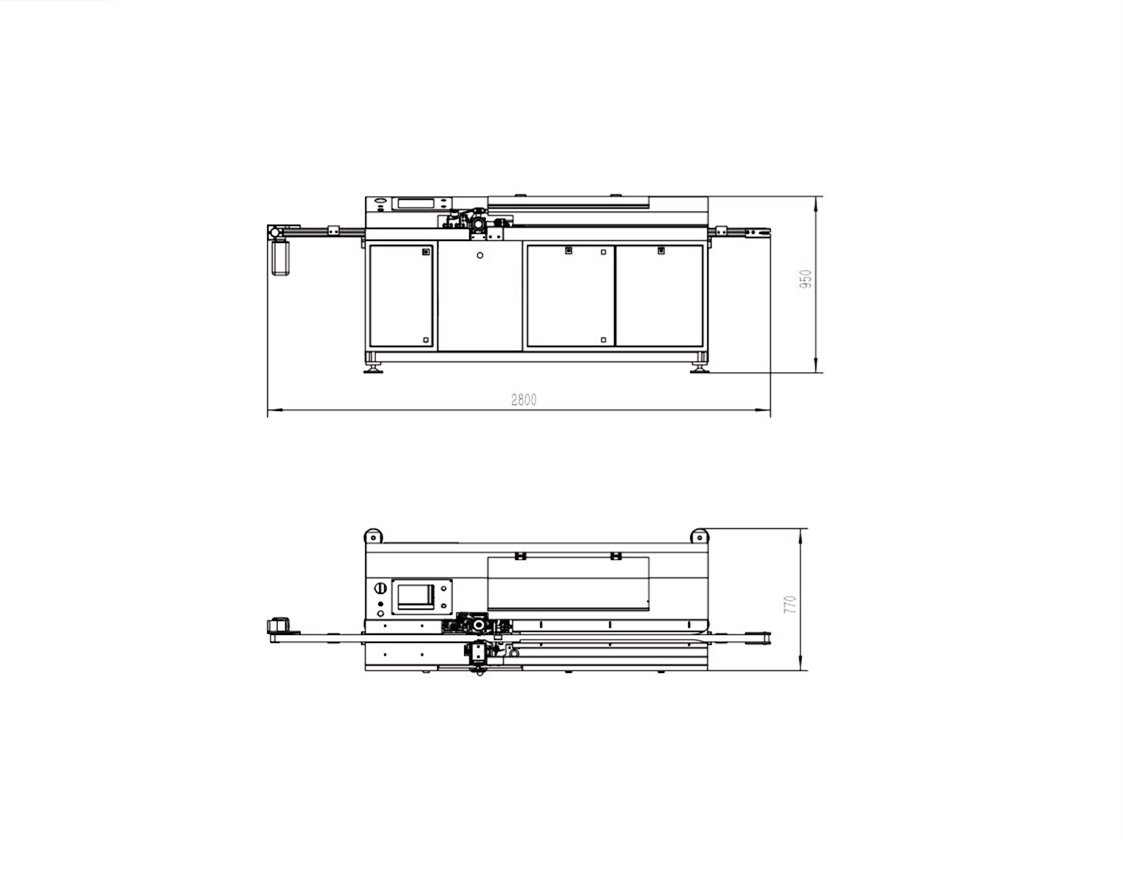 Máquina extrusora de butilo para vidrio aislante LJTB01
Máquina extrusora de butilo para vidrio aislante LJTB01 Máquina automática de llenado de desecante de vidrio aislado
Vidrio LIJIANG - Tipo: LJGZ2020D / LJGZ2020X / LJGZ2020S
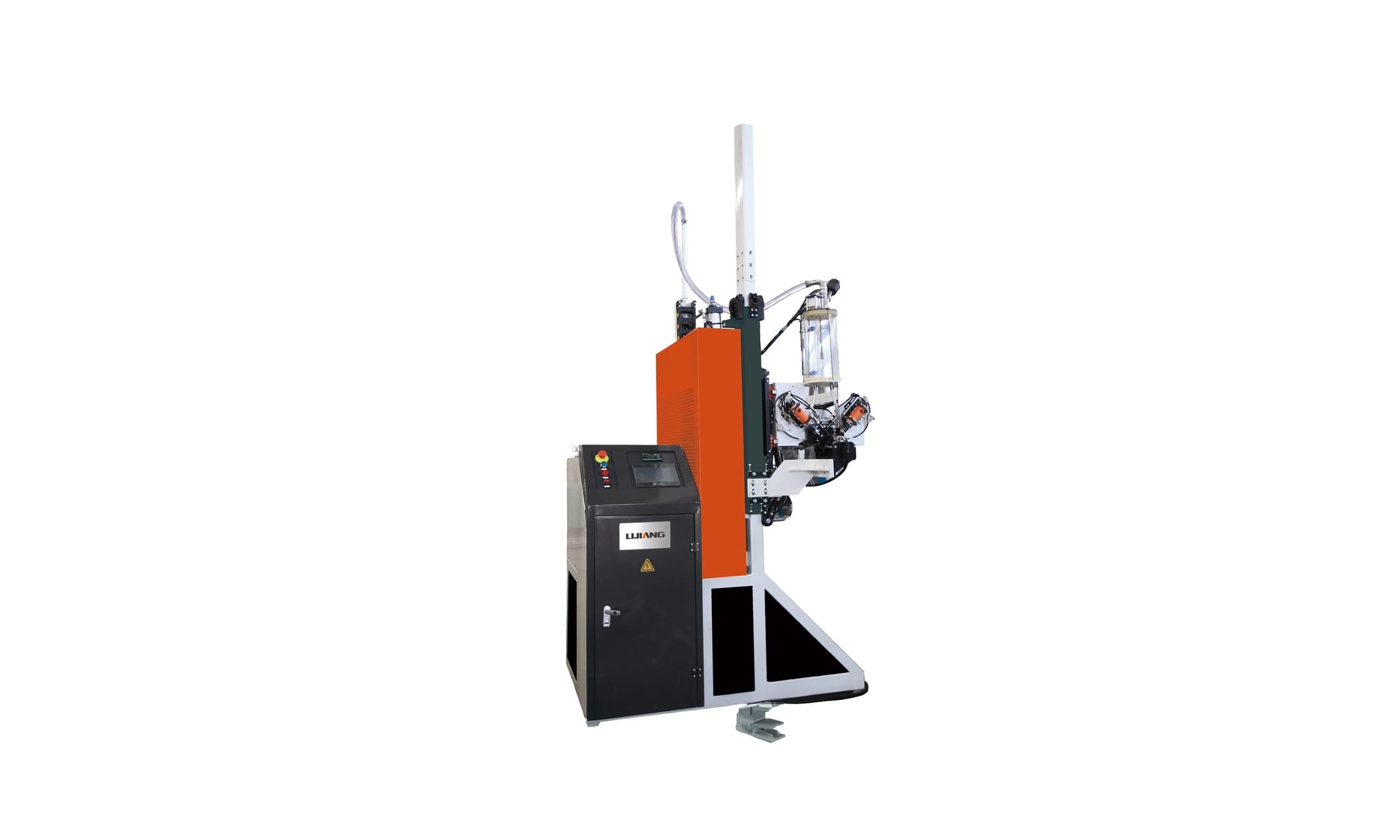
Principio de funcionamiento básico
- Adopta el sistema de control PLC Siemens de Alemania, rendimiento estable;
- Perforación, llenado y sellado automáticos;
- La altura de la máquina se puede ajustar según el tamaño del espaciador de aluminio o el espaciador de acero inoxidable;
- Carga y reposición automática del tamiz molecular;
- Dispositivo de alimentación avanzado diseñado según el principio de flujo de gas;
- Adopta el tratamiento de rociado de plástico industrial de todos los marcos de aluminio;
- Las piezas principales adoptan una famosa marca importada.
Pasos de trabajo detallados
Máquina de llenado de desecante de vidrio aislado LJGZ2020D
Máquina de llenado de desecante de vidrio aislado LJGZ2020X
Máquina de llenado de desecante de vidrio aislado LJGZ2020S
- Usando un barril de plástico grande, ahorre tiempo de alimentación y mejore la eficiencia;
- Dispositivo de protección para el cabezal de la máquina
- Espaciador de aluminio con forma de relleno o espaciador de acero inoxidable
- podría llenar el tamiz molecular de partículas grandes cuyos tamaños son de 1,0 ~ 1,5 mm
Máquina de llenado de desecante de vidrio aislado LJGZ2020X
- Con el dispositivo de elevación del carril guía
- La cabeza es estable cuando se trabaja.
- Con función auxiliar de espaciador grande
Máquina de llenado de desecante de vidrio aislado LJGZ2020S
- Dos estaciones de servicio podrían funcionar al mismo tiempo para mejorar la eficiencia del trabajo;
- Dos estaciones pueden realizar diferentes combinaciones de llenado ordinario, llenado de forma especial y llenado de partículas grandes. (opcional)
Parámetro técnico
| Artículo. | Especificaciones. |
| máx. Tamaño del marco | 2000mm*2000mm |
| mín. Tamaño del marco | 300mm*250mm |
| Especificación de aluminio | 5,5~26,5mm |
| Presión del aire | ≥ 0,65 MPa |
| Voltaje | CA 220V 50Hz |
| Energía | 1Kw |
| Diámetro de tamiz molecular necesario | 0,5~0,9 mm (se puede personalizar 1,0~1,5 mm) |
| Dimensión (L * W * H) | 1400*1200*3600mm |
| Peso | 3000 kg |
Descripción técnica
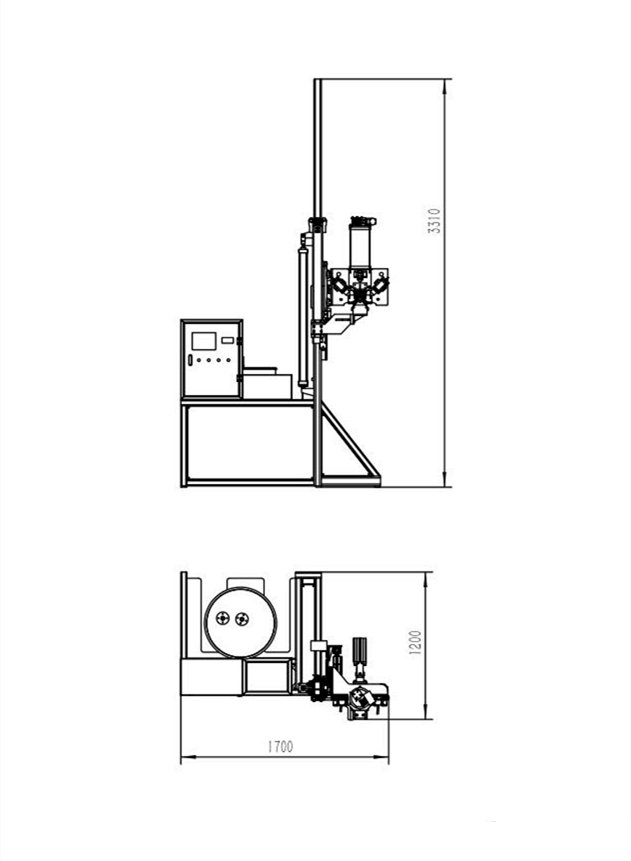 Llenadora desecante de vidrio aislante LJGZ2020A
Llenadora desecante de vidrio aislante LJGZ2020A 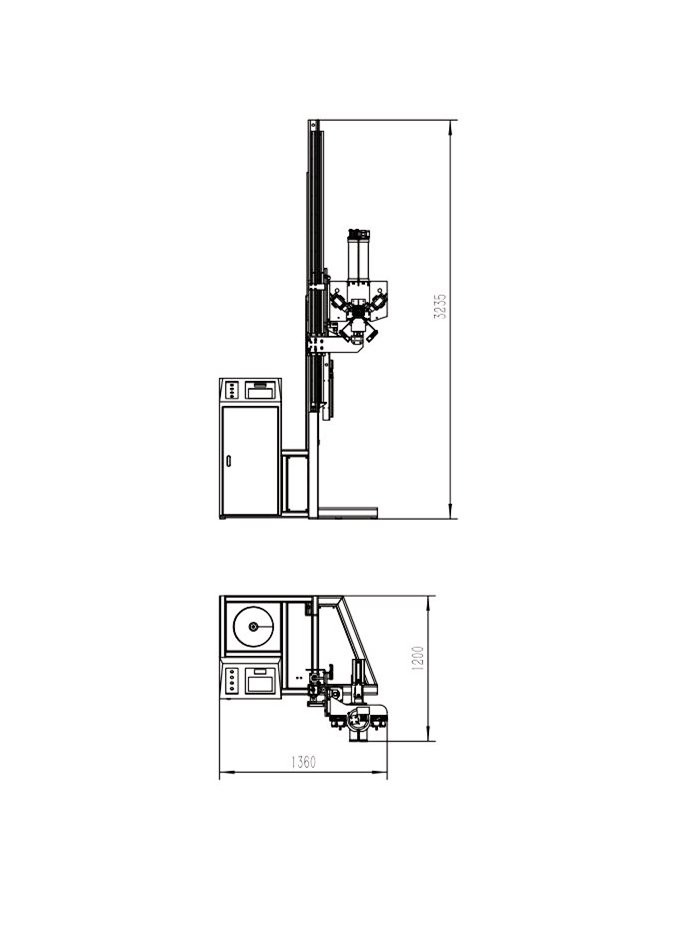 Llenadora desecante de vidrio aislante LJGZ2020X
Llenadora desecante de vidrio aislante LJGZ2020X 
